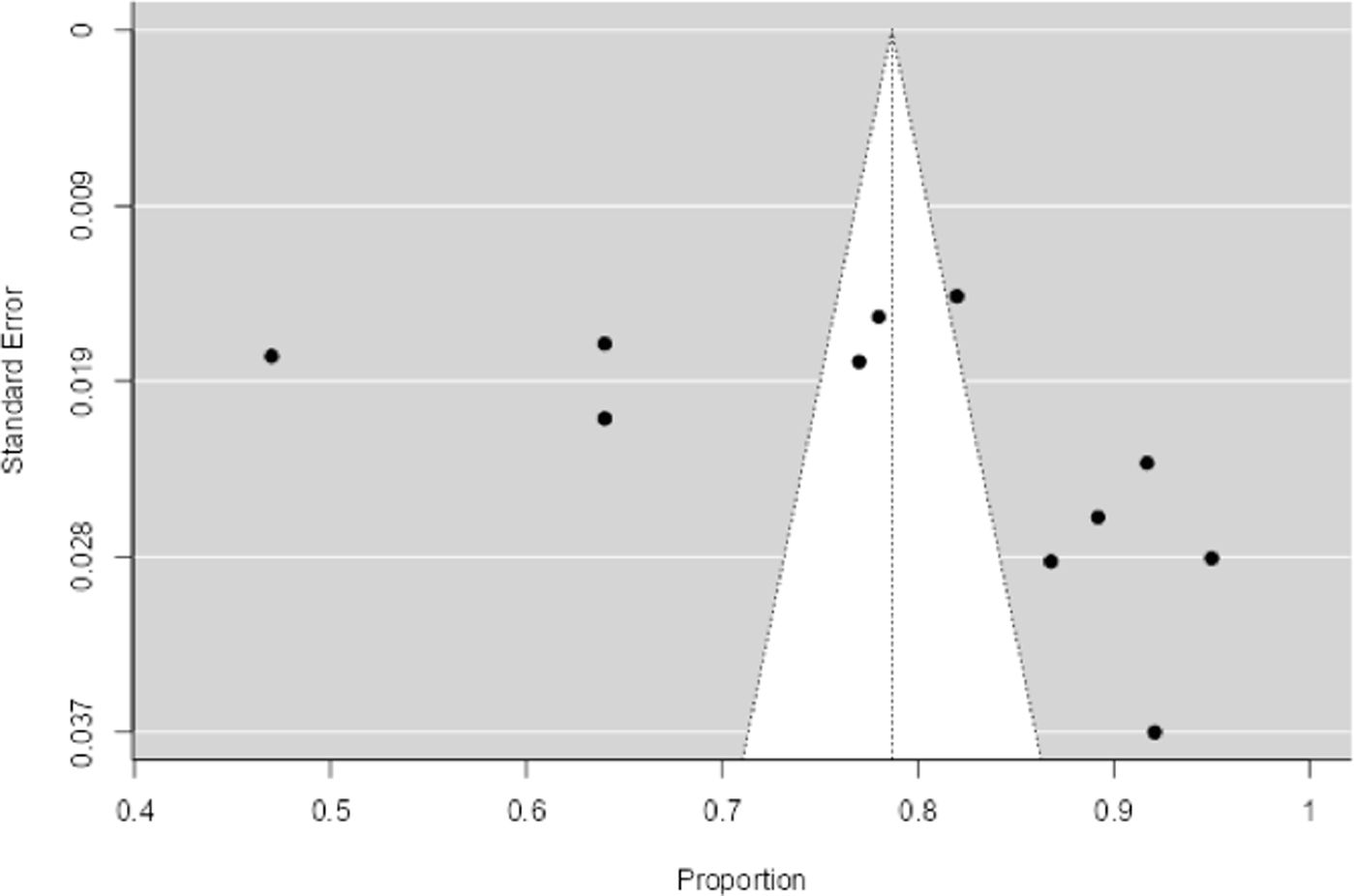We want to determine what the diagnostic criteria for pelvic organ prolapse (POP) should be for each pelvic compartment, establishing their diagnostic capability based on the current literature.
This is a systematic review and meta-analysis of studies published until March 2024 that compared the diagnosis of POP between transperineal ultrasound and clinical POP-Q examination. The authors searched various databases including PubMed/MEDLINE, Scopus, Web of Science, CINAHL, The Cochrane Library and ClinicalTrials.gov.
The Quality Assessment of Diagnostic Accuracy Studies-2 (QUADAS-2) tool was used to assess study quality. Estimates of odds ratios, 95% confidence intervals and significance of sensitivity and specificity were obtained by aggregating all selected studies. All analyses were performed with R software.
The search identified 2359 citations and after applying the inclusion and exclusion criteria, a total of 8 studies were finally included. All studies were considered to have low applicability concerns in terms of patient selection, index test, reference standard, flow and timing. The pooled sensitivity for ultrasound diagnosis of POP was 72.3% with a standard error of 3.1% (p<0.001), tau of 0.11, I2 of 97.1% (p<0.001). The pooled specificity for ultrasound diagnosis of POP was 78.0% with a standard error of 4.4% (p<0.001), tau of 0.16, I2 of 98.6% (p<0.001).
The value of 10mm is the cut-off point for the diagnosis of symptomatic cystocele (static measurement). A value of 15mm is used for the diagnosis of symptomatic rectocele (static measurement) and for uterine prolapse (dynamic measurement). The current evidence is limited, so future research is needed to provide further confirmation.
Queremos determinar cuáles deben ser los criterios diagnósticos de prolapso de órganos pélvicos (POP) para cada compartimento pélvico, estableciendo su capacidad diagnóstica en función de la literatura actual.
Se trata de una revisión sistemática y un metaanálisis de los estudios publicados hasta marzo de 2024, que compararon el diagnóstico de POP entre la ecografía transperineal y el examen clínico POP-Q. Los autores buscaron en varias bases de datos, incluidas PubMed/MEDLINE, Scopus, Web of Science, CINAHL, The Cochrane Library y ClinicalTrials.gov.
Se utilizó la herramienta Quality Assessment of Diagnostic Accuracy Studies-2 (QUADAS-2) para evaluar la calidad de los estudios. Se obtuvieron estimaciones de odds ratio, intervalos de confianza del 95% y significancia de la sensibilidad y especificidad agregando todos los estudios seleccionados. Todos los análisis se realizaron con el software R.
La búsqueda identificó 2.359 citas y, tras aplicar los criterios de inclusión y exclusión, se incluyeron finalmente un total de 8 estudios. Se consideró que todos los estudios tenían problemas de aplicabilidad bajos en términos de selección de pacientes, prueba índice, estándar de referencia, flujo y tiempo. La sensibilidad combinada para el diagnóstico ecográfico de POP fue del 72,3% con un error estándar del 3,1% (p<0,001), tau de 0,11, I2 del 97,1% (p<0,001). La especificidad combinada para el diagnóstico ecográfico de POP fue del 78,0% con un error estándar del 4,4% (p<0,001), tau de 0,16, I2 del 98,6% (p<0,001).
El valor de 10mm es el punto de corte para el diagnóstico de cistocele sintomático (medición estática). Se utiliza un valor de 15mm para el diagnóstico de rectocele sintomático (medición estática) y para prolapso uterino (medición dinámica). La evidencia actual es limitada, por lo que se necesita investigación futura para proporcionar una mayor confirmación.
















